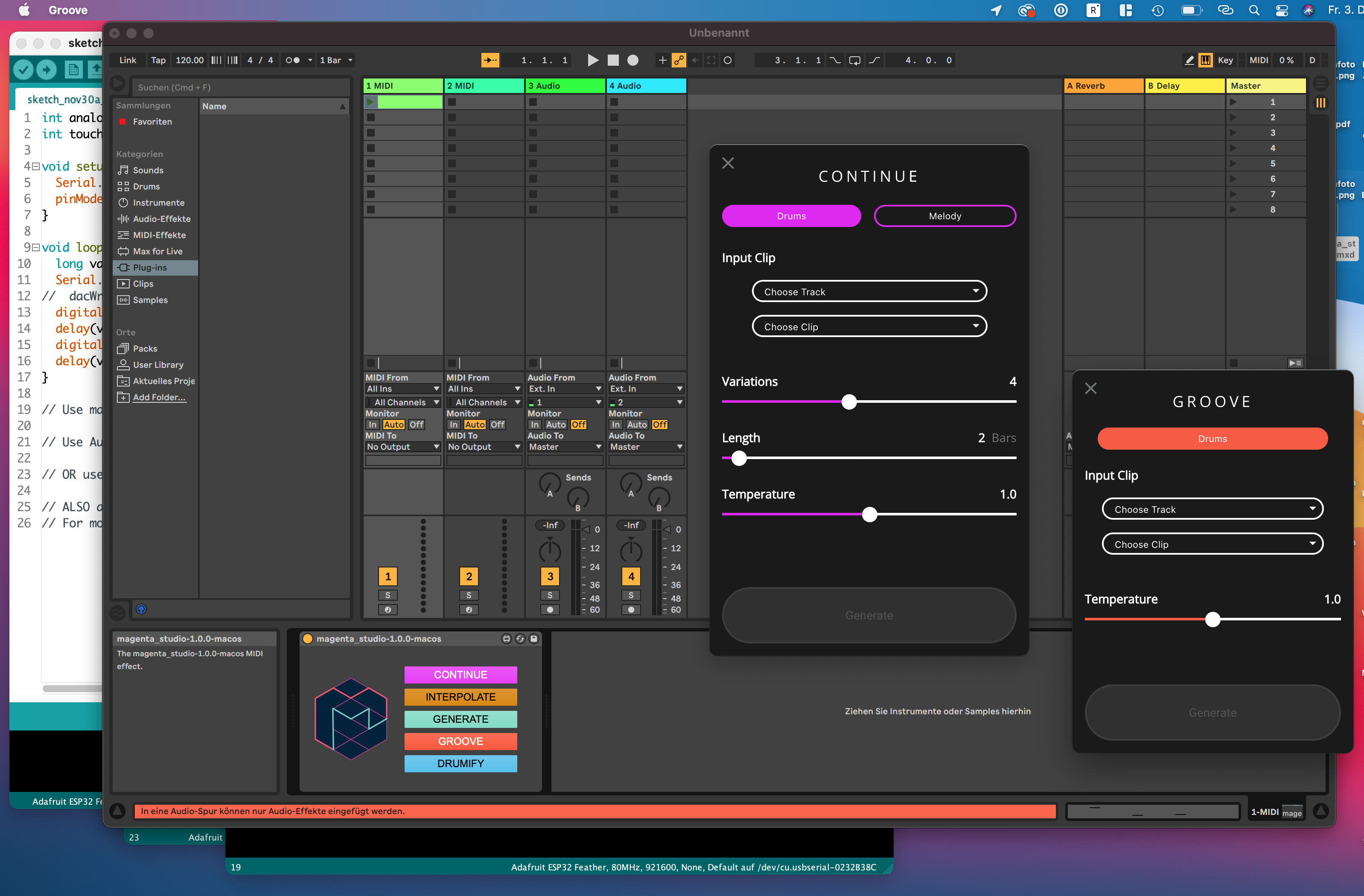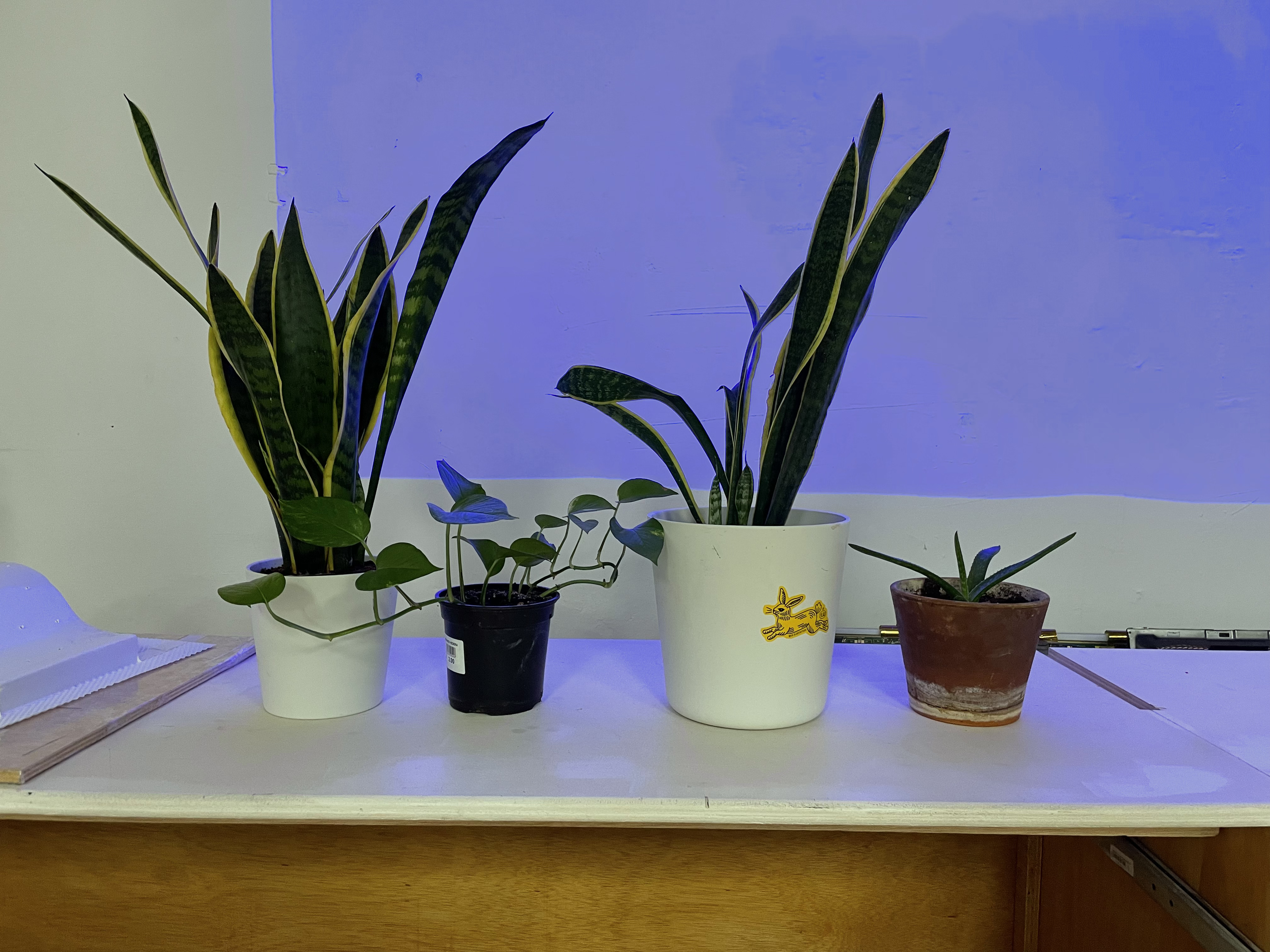Building a Prototype
With the help of the MakeyMakey, some plants from the Fab Lab office (thank you!) and Ableton Live, we managed to get a first minimal viable product for a few classmates to test out. See some of the impressions below:
First Insights
We managed to extract some interesting insights from these experiments. First of all, it was intriguing to see how the sounds produced did not only dramatically change the perception of the users towards this plant, but also the interaction that comes with it. From slight touching and caressing to pinching and hitting the plant, a wide range of interactions could be observed just by linking different sounds to the individual plants. Secondly, the perception of the experiment as a whole changed according to what musical mood we were aiming for: There proved to be a much different vibe between mysterious, atmospheric synthesizer and bell chimes samples on the one hand and some pulsing electronic lead synths on the other hand – while one made our test users connect to the plant on a emotional level, the driving electronic rhythms resonated with our test subjects on a more physical level. This first experiment clearly illustrates why sample selection is an incredibly integral part of the intervention, because it profoundly shapes both interaction with and perception of the plants.


Multiple technology stacks for reading plant conductivity to produce and modulate sounds (left), AI-assisted music plugins by Magenta Labs in Ableton (right).
Next Steps
Our next steps have to be diving deeper into the sound design, fabricating the first plant pots and prototyping an ESP32-based midi device for reading the capacitive touch values from the plants. More on that soon.
